#subpolar ocean
Explore tagged Tumblr posts
Text



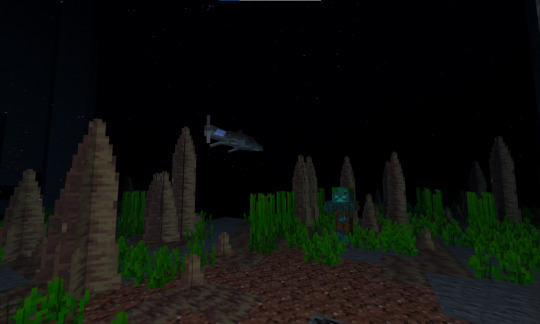
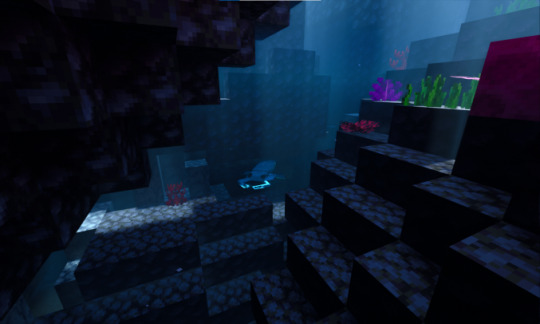

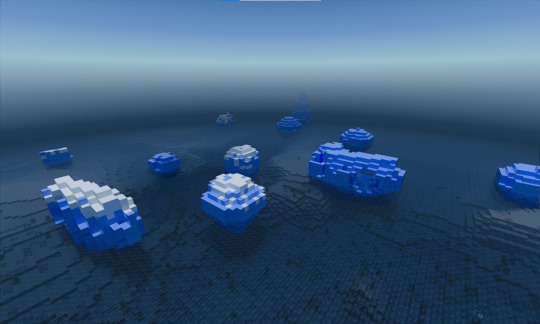
Custom biomes are fun
#the hollow#scorched forest#carboniferous swamp#void ocean#primordial ocean#subglacial ocean#subpolar ocean#Minecraft#Bedrock#mcbe#azhdarchiblock#Yes that is a dinosaur you are seeing
5 notes
·
View notes
Text
Wet Beast Wednesday: false killer whale
Assorted creatures and beasts of the audience, I have been duped. Tricked. Bamboozled, even. I was all ready to write a post on the mighty orca, but this imposter snuck in and tricked me into researching it instead. So this week, I'm covering the false killer whale. You win this time, imposter.

This guy knows he tricked me and he's smug about it.
(Image: a false killer whale poking its head out of the water and sticking its tongue out. It has a bulbous, rounded head with a large snout and eyes on the side. Several conical teeth are showing ad a thick, pink tongue is poking out.)
The false killer whale (Pseudorca crassidens) is actually a dolphin, but the real killer whale is a dolphin too, so I won't hold that against it. False killer whales are closely related to Risso's dolphin, the melon-headed whale (a dolphin), pygmy killer whale (still a dolphin), and the pilot whale (you guessed it, a dolphin). Also dolphins are a subset of toothed whales so this joke was pointless. They are large for dolphins, being the fourth largest species after the orca and two species of pilot whale. Females can reach 5 meters (16 ft) long and 1,200 kg (2,600 lbs) while the large males can reach 6 m (20 ft) and 2,300 kg (5,100 lbs). False killer whales have a similar body shape to orcas, but lack the distinctive black and white coloration, instead being dark gray all over. They have slender bodies with bulges on the front of their flippers and bulbous heads. The bulge on the head contains the melon, a fatty organ toothed whales use to focus their echolocation and vocalizations by acting as a sound lens.

(Image: a pod of 6 false killer whales. They are robust dolphins with bulbous heads and are grey in color. The head lacks the beak seen in may dolphin species and the upper jaw extend beyond the lower one. A single bottlenose dolphin has joined the pod, identifiable by its smaller size and distinct beak. End ID)
False killer whales are found along the coasts and deep oceans of most of the world, from tropical to subpolar latitudes. There are multiple distinct populations that tend to reside in the same general area. These populations can be recognized with unique behavior and vocalizations. They are generally regarded as apex predators, though there have been reports of individuals being attacked by sharks. Their preferred prey is fish and squid, including large fish like tuna. They also prey on other marine mammals, including small or juvenile dolphins and whales. There have even been reports of pods attacking sperm whales. Members of the same pod will share food with each other. Their hunting style is mostly pursuit predation with tactic including ambushes and herding prey into choke points and dead ends. They will also dive for food, and while not much is known about their diving behavior, it appears to be similar to that of related species. Tagged individuals have been recorded going on 12-minute dives and dives as deep as 927.5 m (3,043 ft) though most dives don't go that deep.

(Image: a false killer whale breaching the water, seen mid-jump. End ID)
False Killer whales are highly social animals. As with their close relatives, they live in large pods that typically range from 10 to 20 members and are mostly extended family units led by the oldest female. Males that reach maturity will often leave the pods to seek out mates. Individual families will have their own hunting tactics and vocalizations that are passed down from mother to child. All the females in the pod take part in raising the calves. They communicate with complex vocalizations and body language. False killer whale sociability does not only extend to other members of their species. They are known to peacefully interact with other dolphin species, most notable the common bottlenose dolphin, which whom they will sometimes form mixed-species pods (possibly in reaction to food shortages). False killer whales are also known to respond to distress calls from other dolphin or whale species and help protect them from predators. They have even been recorded helping other species give birth by protecting the mother and helping remove the afterbirth (possibly to eat it). False killer whales have been observed cooperatively hunting fish with true killer whales, working together to herd and capture prey. In these cases, the orcas will take the larger fish while the false killer whales take the smaller ones. Wild false killer whales are reportedly curious about humans and have attempted to share food with divers.

(Image: a false killer whale swimming with a pod of bottlenose dolphins. End DI)
Not much is known about false killer whale reproduction. Based on their relatives, they are probably polygynous, with males attempting to mate with as many females as possible. Males probably provide little to no parental care and calves are raised by their pods. Calves are usually born in late winter after a 15 month gestation period. Newborns can measure up to 2.1 meters (7 ft) and will nurse for between 9 months and 2 years. Mothers will usually not mate until their most recent calf has weaned. False killer whales are one of the few whale species (and few species in general) that can live for a long time after menopause. These elder, non-reproductive females aid the younger mothers in raising their calves, passing on their experience to the younger generations. The maximum age of wild animals is not know, but based on captive specimens, it is up to 57 years for males and 62 for females, with females reaching menopause at 45 to 47 years. Sexual maturity is reach between 8 and 11 years, with males maturing sooner. Male false killer whales have been observed interacting sexually with common bottlenose dolphins, including with males. A hybrid of a male false killer whale and bottlenose dolphin is a wholphin and while extremely rare, they have been observed in the wild.

(Image: a juvenile false killer whale swimming alongside its mother, both seen peeking out of the water. The juvenile is a miniature adult. End ID)

(Image: two wholphins in captivity at Hawaii's Sea Life Park. They look like bottlenose dolphins with shorter beaks and the dark coloration of false killer whales. One has its mouth open. End ID)
There isn't a decent estimation of the wild population of false killer whales, though the population seems relatively stable and they are tentatively classified as near threatened by the IUCN. The Hawai'ian population is considered endangered due to large population losses. They have historically been hunted for meat, leather, and blubber and still are in Japan, where the most common method is using boats to chase them into nets or onshore. False killer whales are known to steal fish off of fishing lines, something that is dangers as swallowing kooks can lead to intestinal blockage or puncturing of the digestive system, both of which can be fatal. It is believed this is the main reason for the decline of the Hawai'ian population. Anglers may also target the dolphins considering them nuisances. False killer whales are know for frequent mass standings and nobody really knows exactly why. Often, whole pods, sometimes hundreds in number, will strand at once and subsequently die. These strandings seem to be increasing due to more extreme weather caused by climate change and possibly an increase in ocean noise. The noise cause by ships has been shown to increase cetacean mortality along major shipping lanes in other species. It has been suggested that the reason whole pods seems to strand together is that their social bond is so strong they will refuse to leave a wounded or stranded member behind. Rescue efforts can help at least some stranded animals return to the water. False killer whales are fairly common in captivity and are housed in aquariums in many countries. They are reported to be more adaptable to captivity than most cetaceans and are intelligent enough to be taught complex tricks. They have been successfully bread in captivity. I generally keep my opinions out of these posts, but I don't think it's really possible to ethically keep cetaceans in captivity outside of rehabilitation and release programs.

(Image: a captive young false killer whale. It has its head out of the water and mouth open, allowing a handler to examine its teeth. End ID)
#wet beast wednesday#false killer whale#dolphin#dolphins#whale#whales#toothed whale#wholphin#cetaceans#marine mammals#marine biology#biology#ecology#zoology#animal facts#marine biodiversity#informative#educational#image described
136 notes
·
View notes
Text
Excerpt from this EcoWatch story:
More than 40 scientists have written an open letter warning of a potential “tipping point” for the Atlantic Meridional Overturning Circulation (AMOC) in the Arctic.
The letter to the Nordic Council of Ministers encourages countries in the region to prevent global heating from causing AMOC’s collapse, which could lead to sudden changes in weather patterns and damage to ecosystems.
“Science increasingly confirms that the Arctic region is a ‘ground zero’ for tipping point risks and climate regulation across the planet. In this region, the Greenland Ice Sheet, the Barents sea ice, the boreal permafrost systems, the subpolar gyre deep-water formation and the Atlantic Meridional Overturning Circulation (AMOC) are all vulnerable to major, interconnected nonlinear changes,” the scientists said in the letter. “The AMOC, the dominant mechanism of northward heat transport in the North Atlantic, determines life conditions for all people in the Arctic region and beyond and is increasingly at risk of passing a tipping point.”
AMOC is an ocean current system that brings warm water to the North Atlantic, giving Europe its mild climate, reported Reuters.
AMOC’s collapse would raise sea levels in the Atlantic, make the Northern Hemisphere cooler, reduce precipitation in North America and Europe and change monsoon patterns in Africa and South America, the United Kingdom’s Met Office said, as reported by Reuters.
“If Britain and Ireland become like northern Norway, (that) has tremendous consequences. Our finding is that this is not a low probability,” said signatory of the letter professor Peter Ditlevsen of the University of Copenhagen, as Reuters reported. “This is not something you easily adapt to.”
67 notes
·
View notes
Text
Maps of Tenebrae by Pockymun

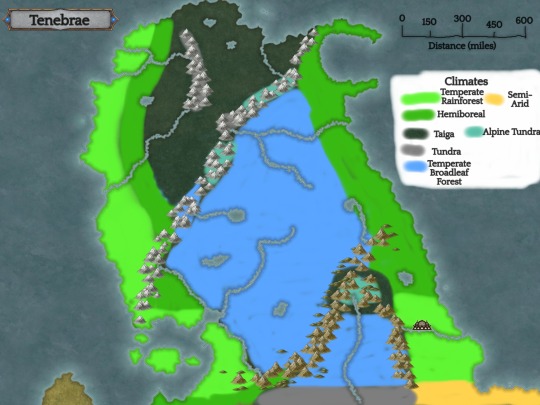
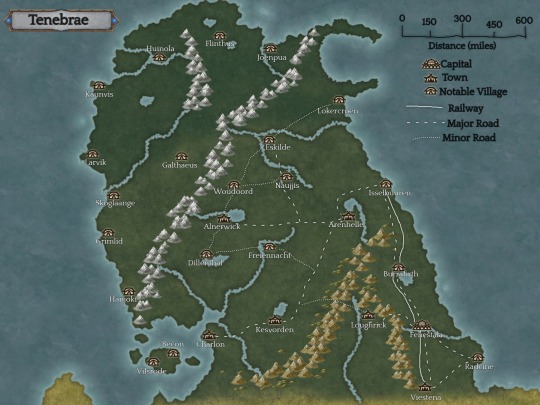
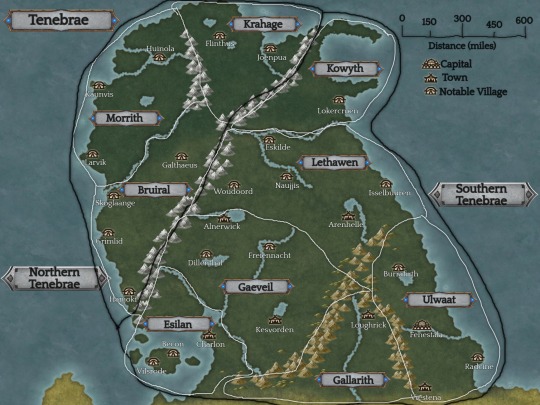
Tenebrae was such a beast. I thought Galahd was difficult; Tenebrae is so much bigger and has continental climates to deal with. Like last time, I nearly lost my mind trying to make sense of the climates, so I kind of gave up.
Most of the writing I've done for FFXV has skirted around Tenebrae, focusing moreso on its politics than the landmass itself. It's been in the background for the most part, largely because I didn't have a proper map to explore with! I copied it the best I could from reference images.
Tenebrae is not as cold as I initially assumed it was. It has a warm ocean current on its western side that brings much rain and warm winds that keep the northern reaches largely temperate. The eastern side of Tenebrae is hit with a cold ocean current, getting far less rain and winds. The fishing is better on the east coast. The southern half of Ulwaat was given a temperate rainforest climate based on what we saw of Tenebrae in Kingsglaive; it had that dark green flora of a rainforest.
I base a lot of my headcanons for Tenebrae off of Western Europe primarily, with a little bit from Northern Europe. The way I figured the latitude lines of Eos, Tenebrae is still well below the subartic circle (assuming Eos has one). It's climate is based upon Ireland, the UK, and Scotland, but those three have only two climates: oceanic and subpolar oceanic. I chose climate terms that best described the forests found in Tenebrae. Because Tenebrae is nothing but forests, mountains, and hills.
Tenebrae is the land of high altitudes and trees. What reference images we have of Tenebrae seemed to have a lot of peaks on it. In the glimpse of Tenebrae that we saw in the movie, there are large rock islands that just float above the rest of the land. While Galahdians have a knack for using magic, Tenebrae itself is a land of magic. These floating islands are unique to its mountains mostly, although a few clusters can exist separately.
Water also seems to be a theme for Tenebrae, with its northern cape, the southern sounds, and a few small bays all around. Where there are mountains, there are rivers running down to the ocean. I imagine there are natural springs all around the country, used as a natural remedy for several ailments.
I will dump my headcanons about Tenebrae below:
I've been talking with @groovytimetravelflower, who has the theory that Niflheim's airships are powered by stones or ores mined from the floating islands. It just makes perfect sense. Niflheim had several reasons to invade Tenebrae: to dominate the whole continent, to establish complete control over trade, and to get their hands on whatever magic exists in the land.
Much of the magic is not well-known nor understood beyond the floating islands. The forests of Tenebrae are old, especially in the north.
The only other country close enough for Tenebrae to trade with is Niflheim. Though Tenebrae has a couple ports of its own, these are not large enough for massive shipyards and international trade. Trading with Niflheim allows Tenebraen trade goods to go farther in the world. The downside is that Niflheim can control all trade that Tenebrae does, taking things for the Empire and blocking imports.
The country is very difficult to navigate because of the terrain. Roads are often winding and go around obstacles; this was done moreso out of the belief that the land could not be damaged by man-made endeavors. Trains have only been established in Ulwaat. There may be a few antique cars, but the most common mode of transportation on main roads are chocobo-drawn carriages, or riding chocobos.
Tenebrae is behind on technology overall: this is a result of Niflheim conquering them so long ago. Niflheim doesn't often invest in the lands they conquer. You can see this in how mainland Lucis has such outdated technology, which was left to languish once the Imperials seized control. Most high-technology Tenebrae is exposed to comes from the Imperial Army and is only used in their operations. Ulwaat is the most developed province. The railroad in Ulwaat was developed by the Empire to more easily transport the stone and ore they mined in the mountains.
The further away one gets from Fenestala, the less modern technology there is. In Morrith, Krahage, and Bruiral, indoor plumbing is a recent technological advancement. Not all places have it; it requires electricity, which is difficult to establish in Northern Tenebrae. Because Tenebrae is such a mystical place and the population is probably very religious because of the Oracle, not a lot of people mind being behind in technology.
Cellphones are unheard of, and you wouldn't get reception in most of Tenebrae anyway. Fenestala Manor probably has a couple TVs, but similarly, reception is terrible. Radio signals come through a little more clearer, mostly because the Imperial Army needs them to.
The architecture of the capital and towns of Tenebrae is Victorian and Edwardian, with art noveau used in Fenestala Manor. Villages typically are full of cottages of wood or stone and roofed with thatch. The typical fashion is also Victorian and Edwardian, although more of the youth have recently begun to wear the modern Western clothing imported from Niflheim. People further north of the Breksos Mountains dress in traditional Celtic and Norse garb.
The Breksos Mountain Range naturally divides Tenebrae into a North and a South. These regions do not strictly adhere to the cardinal directions; it is just what people have referred to it as. Travel through these mountains is especially difficult. There is one passage near Woudoord, but it becomes blocked by snow in the winter, completely isolating the north.
Queen Sylva frequently sent aid in the form of doctors, vaccines, and schoolteachers to Northern Tenebrae. She did a lot to improve the relations across the mountains, although the past few Oracles have never gone north of the mountains. All aid stopped with her death. The Northerners became even more apprehensive of Southerners as they appeared to submit to the Empire.
Northern Tenebrae is even further behind in technological advancements than Southern Tenebrae (ie the indoor plumbing). Northern Tenebrae is very isolated from the rest of the world, especially in the winter. It's rare for a Northerner to travel south, and vice versa. The South views the North as barbarous, and the North view the South as weak. Southerners are prim and proper; Northerners... are not. Both greatly revere the Oracle.
As I said before, Tenebraens are religious, largely in part to the Oracle's presence. Tenebrae has become known as a land of healers, with many practicing natural remedies. The people are generally modest and proper. Victorian and Edwardian social customs still run strong.
Tenebraens are seen as mysterious and exotic to the rest of the world. Niflheim hasn't allow Tenebraens to leave their country since they attacked Fenestala Manor, so it's very rare to see one in Lucis. The rest of the world doesn't really understand the difference between North and South Tenebraens. The differences become clear when putting one of each side by side and listening to the bickering.
-
Feel free to use these maps when writing your own fics or headcanons! I would greatly appreciate being credited. These maps are just my interpretation, and don't stand in for canon material. They are flawed, but I worked with what I had. I made these using Inkarnate.
#final fantasy xv#ffxv#tenebrae#worldbuilding#fantasy map#reference#kingsglaive#I could go on but that's too many of my own personal headcanons and plots for fics#I've already said too much
98 notes
·
View notes
Text
Animalnomenon of the day: (Earless) Seals!
Hello everyone! This is my first post here on animalnomenon, a blog I want to dedicate to researching about different animals —mainly fun facts— and showing what I've found to the world in a (hopefully) fun way! Apologies if I get anything wrong, if so, feel free to correct me!
Famous for being extremely cute, earless seals, also known as true seals are pinnipeds (like walruses and sea lions, but they are not the same!) and usually live in the polar, subpolar or temperate oceans of both hemispheres, with an exception of the monk seal, that lives in warm, subtropical areas.
Despite their silly appearance, seals are actually quite smart! They have a variety of sounds to communicate with themselves for many different purposes, be it interacting with their fellow seals, mating or even protecting their territory.

Baby seals actually have warm fur! When they are born, they rely heavily on the mother's nourishment and only gain their carnivorous habits because of their parents, they also have a thick layer of warm fur while they are young, since they still don't have the thick layer of fat adult seals use to protect themselves from the cold!
Baby seals can't actually swim from birth (some can swim near their birth and some can take longer to learn). While the baby seal still needs milk from its mother, the mother and the cub stay together(but the time varies between species) , but after that, the cub will gain more independence , and after 6 months it'll be fully developed!

Although nowadays they live in marine habitats, their ancestors were actually terrestrial animals, that is unusual in aquatic species, since most of them come from animals that lived their whole lives in the water, but seals aren't like that! Marine mammals, like seals actually come from species that lived a long on land before deciding to return to the sea (still, seals can survive both on land and the sea).
Since they spend a lot of time underwater, and swim surprisingly long distances, some species even are able to swim to deeper points, they have a muscle inside their nose to block it while they dive, so that the water wont enter their nose.

That was the animalnomenon of the day!
9 notes
·
View notes
Text
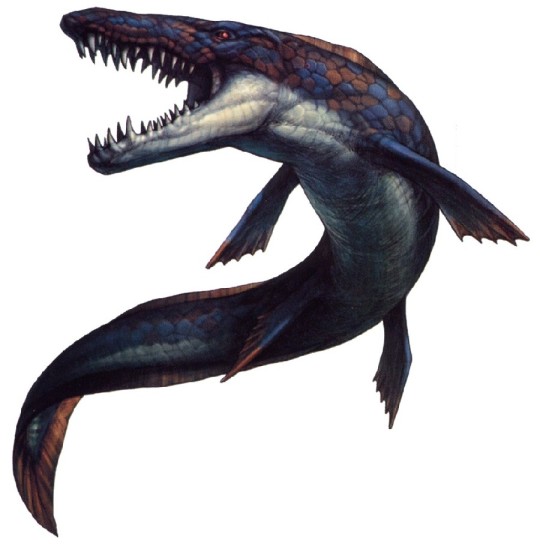
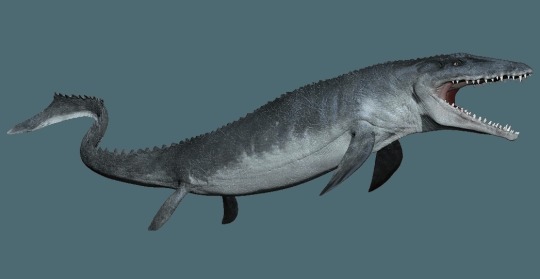
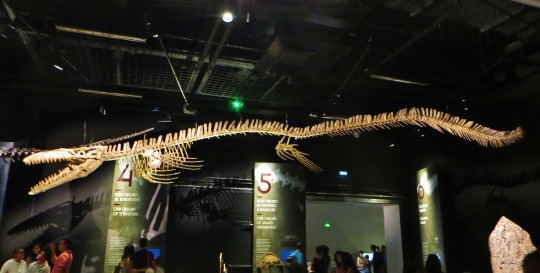
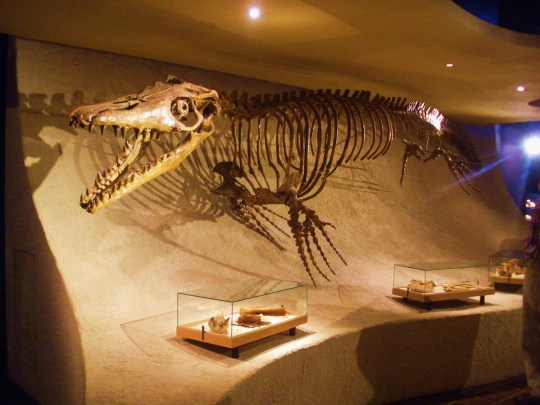
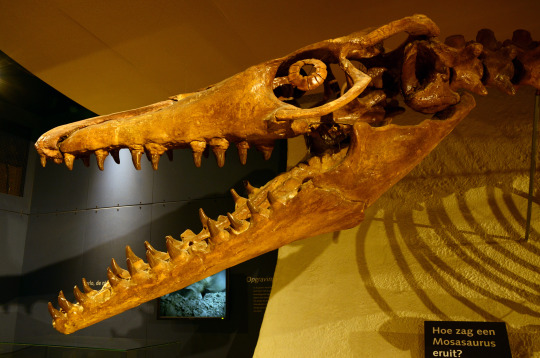
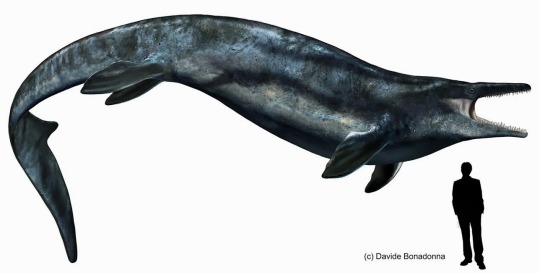

Mosasaurus
(temporal range: 82.7-66.0 mio. years ago)
[text from the Wikipedia article, see also link above]
Mosasaurus (/ˌmoʊzəˈsɔːrəs/; "lizard of the Meuse River") is the type genus (defining example) of the mosasaurs, an extinct group of aquatic squamate reptiles. It lived from about 82 to 66 million years ago during the Campanian and Maastrichtian stages of the Late Cretaceous. The genus was one of the first Mesozoic marine reptiles known to science—the first fossils of Mosasaurus were found as skulls in a chalk quarry near the Dutch city of Maastricht in the late 18th century, and were initially thought to be the bones of crocodiles or whales. One skull discovered around 1780, which was seized by France during the French Revolutionary Wars for its scientific value, was famously nicknamed the "great animal of Maastricht". In 1808, naturalist Georges Cuvier concluded that it belonged to a giant marine lizard with similarities to monitor lizards but otherwise unlike any known living animal. This concept was revolutionary at the time and helped support the then-developing ideas of extinction. Cuvier did not designate a scientific name for the new animal, and this was done by William Daniel Conybeare in 1822 when he named it Mosasaurus in reference to its origin in fossil deposits near the Meuse River. The exact affinities of Mosasaurus as a squamate remain controversial, and scientists continue to debate whether its closest living relatives are monitor lizards or snakes.
Traditional interpretations have estimated the maximum length of the largest species, M. hoffmannii, to be up to 17.1 meters (56 ft), making it one of the largest mosasaurs, although some scientists consider this an overestimation with recent estimates suggesting a length closer to 13 meters (43 ft). The skull of Mosasaurus was equipped with robust jaws capable of swinging back and forth and strong muscles capable of powerful bites using dozens of large teeth adapted for cutting prey. Its four limbs were shaped into robust paddles to steer the animal underwater. Its tail was long and ended in a downward bend and a paddle-like fluke. Mosasaurus was a predator possessing excellent vision to compensate for its poor sense of smell, and a high metabolic rate suggesting it was endothermic ("warm-blooded"), an adaptation in squamates only found in mosasaurs. There is considerable morphological variability across the currently-recognized species in Mosasaurus—from the robustly-built M. hoffmannii to the slender and serpentine M. lemonnieri—but an unclear diagnosis (description of distinguishing features) of the type species M. hoffmannii led to a historically problematic classification. As a result, more than fifty different species have been attributed to the genus in the past. A redescription of the type specimen in 2017 helped resolve the taxonomy issue and confirmed at least five species to be within the genus. Another five species still nominally classified within Mosasaurus are planned to be reassessed in a future study.
Fossil evidence suggests Mosasaurus inhabited much of the Atlantic Ocean and the seaways adjacent to it. Mosasaurus fossils have been found in places as diverse as North and South America, Europe, Africa, Western Asia, and Antarctica. This distribution encompassed a wide range of oceanic climates including tropical, subtropical, temperate, and subpolar climates. Mosasaurus was a common large predator in these oceans and was positioned at the top of the food chain. Paleontologists believe its diet would have included virtually any animal; it likely preyed on bony fish, sharks, cephalopods, birds, and other marine reptiles including sea turtles and other mosasaurs. It likely preferred to hunt in open water near the surface. From an ecological standpoint, Mosasaurus probably had a profound impact on the structuring of marine ecosystems; its arrival in some locations such as the Western Interior Seaway in North America coincides with a complete turnover of faunal assemblages and diversity. Mosasaurus faced competition with other large predatory mosasaurs such as Prognathodon and Tylosaurus—which were known to feed on similar prey—though they were able to coexist in the same ecosystems through niche partitioning. There were still conflicts among them, as an instance of Tylosaurus attacking a Mosasaurus has been documented. Several fossils document deliberate attacks on Mosasaurus individuals by members of the same species. In fighting likely took place in the form of snout grappling, similarly seen in modern crocodiles today.
6 notes
·
View notes
Text
Q&A: Is a critical system of ocean currents headed toward an imminent collapse?
I've been involved in the Rapid Climate Change-Meridional Overturning Circulation and Heat Flux Array (RAPID-MOCHA) project since it began in 2004, and also with OSNAP (Overturning in the Subpolar North Atlantic Program)
I love these acronyms
3 notes
·
View notes
Photo
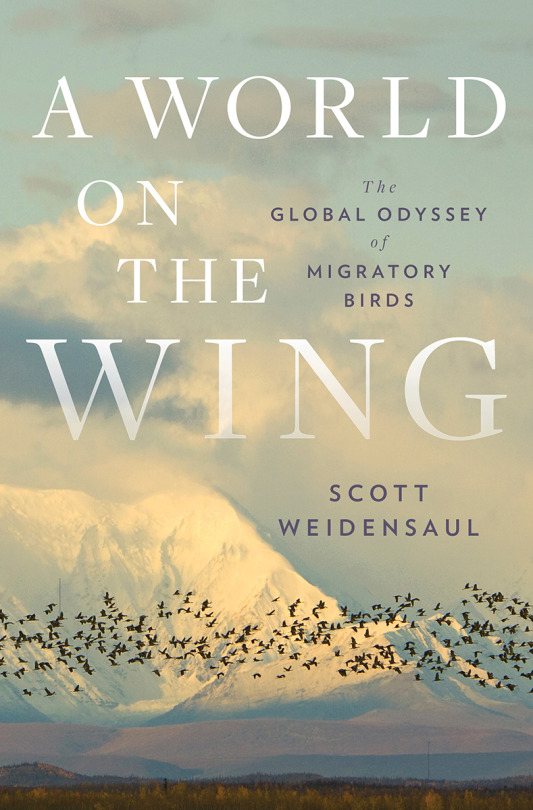
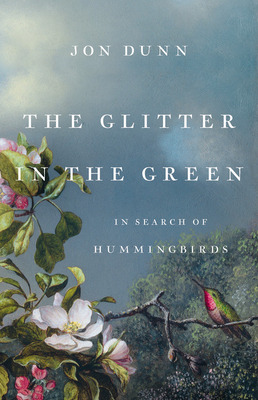
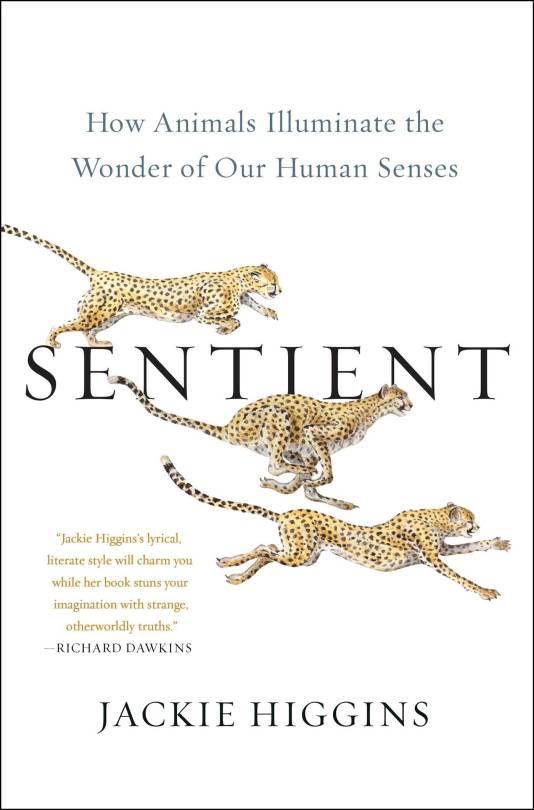
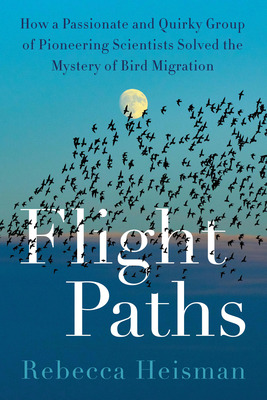
Read-Alike Friday: What an Owl Knows by Jennifer Ackerman
A World on the Wing by Scott Weidensaul
In the past two decades, our understanding of the navigational and physiological feats that enable birds to cross immense oceans, fly above the highest mountains, or remain in unbroken flight for months at a stretch has exploded. What we’ve learned of these key migrations—how billions of birds circumnavigate the globe, flying tens of thousands of miles between hemispheres on an annual basis—is nothing short of extraordinary.
Bird migration entails almost unfathomable endurance, like a sparrow-sized sandpiper that will fly nonstop from Canada to Venezuela—the equivalent of running 126 consecutive marathons without food, water, or rest—avoiding dehydration by "drinking" moisture from its own muscles and organs, while orienting itself using the earth’s magnetic field through a form of quantum entanglement that made Einstein queasy. Crossing the Pacific Ocean in nine days of nonstop flight, as some birds do, leaves little time for sleep, but migrants can put half their brains to sleep for a few seconds at a time, alternating sides—and their reaction time actually improves.
These and other revelations convey both the wonder of bird migration and its global sweep, from the mudflats of the Yellow Sea in China to the remote mountains of northeastern India to the dusty hills of southern Cyprus. This breathtaking work of nature writing from Pulitzer Prize finalist Scott Weidensaul also introduces readers to those scientists, researchers, and bird lovers trying to preserve global migratory patterns in the face of climate change and other environmental challenges.
The Glitter in the Green by Jon Dunn
Hummingbirds are a glittering, sparkling collective of over three hundred wildly variable species. For centuries, they have been revered by indigenous Americans, coveted by European collectors, and admired worldwide for their unsurpassed metallic plumage and immense character. Yet they exist on a knife-edge, fighting for survival in boreal woodlands, dripping cloud forests, and subpolar islands. They are, perhaps, the ultimate embodiment of evolution's power to carve a niche for a delicate creature in even the harshest of places.
Traveling the full length of the hummingbirds' range, from the cusp of the Arctic Circle to near-Antarctic islands, acclaimed nature writer Jon Dunn encounters birders, scientists, and storytellers in his quest to find these beguiling creatures, immersing us in the world of one of Earth's most charismatic bird families.
Sentient by Jackie Higgins
Perfect for fans of The Soul of an Octopus and The Genius of Birds, this book explores how we process the world around us through the lens of the incredible sensory capabilities of thirteen animals, revealing that we are not limited to merely five senses.
There is a scientific revolution stirring in the field of human perception. Research has shown that the extraordinary sensory powers of our animal friends can help us better understand the same powers that lie dormant within us.
From the harlequin mantis shrimp with its ability to see a vast range of colors, to the bloodhound and its hundreds of millions of scent receptors; from the orb-weaving spider whose eyes recognize not only space but time, to the cheetah whose ears are responsible for its perfect agility, these astonishing animals hold the key to better understanding how we make sense of the world around us.
Flight Paths by Rebecca Heisman
For the past century, scientists and naturalists have been steadily unravelling the secrets of bird migration. How and why birds navigate the skies, traveling from continent to continent—flying thousands of miles across the earth each fall and spring—has continually fascinated the human imagination, but only recently have we been able to fully understand these amazing journeys. Although we know much more than ever before, even the most enthusiastic birdwatcher may not know how we got here, the ways that the full breadth of scientific disciplines have come together to reveal these annual avian travels.
Flight Paths is the never-before-told story of how a group of migration-obsessed scientists in the twentieth and twenty-first centuries engaged nearly every branch of science to understand bird migration—from where and when they take off to their flight paths and behaviors, their destinations and the challenges they encounter getting there. Uniting curious minds from across generations, continents, and disciplines, bird enthusiast and science writer Rebecca Heisman traces the development of each technique used for tracking migratory birds, from the first attempts to mark individual birds to the cutting-edge technology that lets ornithologists trace where a bird has been, based on unique DNA markers. Along the way, she touches on the biggest technological breakthroughs of modern science and reveals the almost-forgotten stories of the scientists who harnessed these inventions in service of furthering our understanding of nature (and their personal obsession with birds).
#readalikes#nonfiction#nonfiction reads#Nonfiction Reading#nonfiction books#Library Books#Reading Recs#reading recommendations#book recs#Book Recommendations#TBR pile#tbr#tbrpile#to read#Want To Read#Booklr#book tumblr#book blog#library blog
2 notes
·
View notes
Text
I really don't fit in here lol
Everyone is celebrating a hot Halloween and saying how 75 and sunny is a beautiful day. No ma'am. I'll take 55, cloudy, and rainy faster than a heartbeat.
I belong on a northern island somewhere living my best subpolar oceanic life 🤣
0 notes
Text
youtube
Journey to the Centre of the Earth (Pinnacle Entertainment UK)
Journey to the Center of the Earth (French: Voyage au centre de la Terre), also translated with the variant titles A Journey to the Centre of the Earth and A Journey into the Interior of the Earth, is a classic science fiction novel written by French novelist Jules Verne. It was first published in French in 1864, then reissued in 1867 in a revised and expanded edition. Professor Otto Lidenbrock is the tale's central figure, an eccentric German scientist who believes there are volcanic tubes that reach to the very center of the earth. He, his nephew Axel, and their Icelandic guide Hans rappel into Iceland's celebrated inactive volcano Snæfellsjökull, then contend with many dangers, including cave-ins, subpolar tornadoes, an underground ocean, and living prehistoric creatures from the Mesozoic and Cenozoic eras (the 1867 revised edition inserted additional prehistoric material in Chaps. 37–39). Eventually the three explorers are spewed back to the surface by an active volcano, Stromboli, located in southern Italy.
The category of subterranean fiction existed well before Verne. However his novel's distinction lay in its well-researched Victorian science and its inventive contribution to the science-fiction subgenre of time travel—Verne's innovation was the concept of a prehistoric realm still existing in the present-day world. Journey inspired many later authors, including Sir Arthur Conan Doyle in his novel The Lost World, Edgar Rice Burroughs in his Pellucidar series, and J. R. R. Tolkien in The Hobbit.
Journey to the Centre of the Earth: A Pinnacle Storyteller - Read by the Third Doctor (C.V.: Jon Pertwee) © 1975 Pinnacle Entertainment and Windsong International Records
0 notes
Text

Current Affairs -
The World Meteorological Organization (WMO) has recently published its State of the Global Climate 2023 report, revealing that the heat content in our oceans reached an all-time high during the year.
The rise in ocean heat content can be attributed to human-caused climate factors, specifically the emission of greenhouse gases and alterations in land use.
While the majority of the world's oceans are currently experiencing warming due to climate change, there are still relatively small regions that are actually cooling. One example is the subpolar North Atlantic Ocean, which has been showing a decrease in temperature despite global trends.
.
.
.
#generalknowledge#general knowledge#affairsmastery#current events#current news#upscaspirants#upsc2024#upscprelims2024#upsc#upscprelims#generalknowledgeindia#climate change#climate action#climate crisis#environment
1 note
·
View note
Text
COP28: What will it take to phase out fossil fuels?
What will it take to phase out fossil fuels to stay within 1.5 degrees Celsius of warming? That's Tuesday's focus at the United Nations climate. That conversation could prove challenging with COP being hosted in the United Arab Emirates which is known for oil and gas. Many of the world leaders who attended the opening of the summit have now left, meaning negotiations over how to move forward will properly start.
NPR's Aya Batrawy is at the gathering in Dubai. She joins host Deepa Fernandes for the latest.
LISTEN 05:57 https://www.wbur.org/hereandnow/2023/12/05/cop28-phasing-out-fossil-fuels
Major climate tipping points could be triggered within a decade
"The report, put together by more than 200 researchers worldwide, brings together all the existing studies on tipping points and also includes research that is about to be published.
According to the report, the five major tipping points we are near to crossing are: the loss of the Greenland ice sheet, the demise of the West Antarctic ice sheet, the die-off of tropical coral reefs, the abrupt thaw of large areas of Arctic permafrost and the slowing of an ocean current known as the North Atlantic subpolar gyre."
"These 6 tipping points could be catastrophic for humanity, says the UN"
READ MORE Major climate tipping points could be triggered within a decade (msn.com)
CO2 emissions to surge past 50% above pre-industrial levels, warns study
“Global emissions at today’s level are rapidly increasing the CO2 concentration in our atmosphere, causing additional climate change and increasingly serious and growing impacts,” Le Quéré added. “All countries need to decarbonize their economies faster than they are at present to avoid the worse impacts of climate change."
READ MORE CO2 emissions to surge past 50% above pre-industrial levels, warns study (msn.com)
0 notes
Text
The end of the Atlantic Meridional Overturning Circulation (AMOC) as we know it?
Ocean currents flow across the globe. Life on Earth relies on them to regulate the climate in a multitude of ways. Without the movement of the Atlantic Meridional Overturning Circulation (AMOC), it is hard to imagine what would happen to us. Current scientific reports suggesting the collapse of the AMOC has sparked concern to certain scientists. Articles, based on recent research being done across the Atlantic Ocean, suggested that the collapse of the AMOC could happen within the next 100 years. Therefore, the following is based around a research question of what kind of weather pattern shifts would occur if AMOC were to shut down?
What is the Atlantic Meridional Overturning Circulation (AMOC)?
The Atlantic Meridional Overturning Circulation (AMOC) is a set of currents that connects the Southern Ocean and the North Atlantic including the Gulf Stream (1). As seen in Figure 1 (8), circulation carries cold water from the poles toward the equator, and distributes heat from the equator to northern latitudes. The AMOC is powered by two things: the temperature of the ocean and the varying concentrations of salt in the water.
Figure 1: The Atlantic meridional overturning circulation (AMOC) (8).

In simple terms, there is warm and salty water that is flowing near or just beneath the surface from the South Atlantic, through the tropics, towards the subpolar North Atlantic. Once there in the North, the water releases heat to the cold atmosphere. Since cold water is denser than warm water, the cold water in the north sinks to deeper parts of the ocean. This forms the southward return flow of the conveyor belt, where water flows from the North Atlantic to the South Atlantic (1). The AMOC is a critical component of the Earth’s climate system. The distribution of heat throughout the Atlantic Ocean basin helps to regulate climate and weather patterns across the globe.
Circulation like this leads to redistribution of heat and energy of mass proportions. The maximum northward heat transport by this system equals about 1.3 petawatts or 13,000,000,000,000,000 watts which is equivalent to the amount of energy produced by a million medium sized nuclear power stations (1).
What Would Happen If the AMOC Stopped?
If the AMOC were to stop a plethora of changes would happen around the world. A significant cooling, as much as 5-10 degrees Celsius, over parts of Europe would occur due to the inability of heated waters to be transported to the northern parts of the Atlantic. Additionally, some scientists suggest that sustained atmospheric high pressure systems over Europe would increase summer heat waves (8). As seen in Figure 2 (5), tropical rain belts usually located near the equator could shift their positions southward, which would cause some southern regions to experience more floods while others in more northern regions could suffer more droughts. The North Atlantic near the United States east coast could see an intense increase in rising sea levels along with warmer ocean temperatures which would disrupt the cold-water species that live in those locations (cod, lobster, etc). Furthermore, the change in ocean circulation could potentially lock in colder winter conditions over the eastern United States (8). Overall, the Atlantic may absorb less carbon dioxide from the atmosphere. Parts of the deep ocean may then receive less oxygen. From that, marine ecosystems could change in ways that scientists are not currently able to predict (3).
Figure 2: Schematic of the global climatic response to AMOC shutdown (5).

An AMOC shutdown would not just drive changes in the Atlantic region. The shutdown would drive a significant strengthening of the Pacific Walker circulation as seen in Figure 2 (5). The Pacific Walker circulation, which is driven by temperature and pressure gradients, is the longitudinal atmospheric circulation across the equatorial Pacific (6). The Walker circulation is triggered by enhanced low-level easterlies across the Panama Isthmus. The stronger trade winds in the Pacific in turn lead to tropical central Pacific cooling and increased Walker circulation acceleration. Therefore, a positive Bjerknes feedback is established which forces the tropical Pacific into a more permanent La Niña state (5).
A more permanent La Niña state is when the trade winds in the Pacific are stronger than usual, pushing more warm water toward Asia. This transition of warm water to Asia results in increased rainfall leading to an uptick in flooding in Asian countries and Australia. Additionally, during the winter season, Asia and Australia would most likely experience colder winter conditions. Upwelling increases off the west coast of the Americas which brings cold, nutrient-rich water to the surface of the ocean. These colder waters in the Pacific then push the jet stream northward. This leads to more droughts in the southern parts of the United States and heavy rains and flooding in the Pacific Northwest and Canada. Winter temperatures are warmer than usual in the South and cooler than usual in the North. A more severe hurricane season in the Western Hemisphere and summer monsoon season in the Eastern Hemisphere could occur as well (7).
Is It the End As We Know It?
A recent study found that the collapse of the AMOC could happen within a few decades as a result of human-caused global warming. Meanwhile, other researchers suggest that the timeline of a collapse, or even whether the AMOC will collapse at all, remains unclear. This uncertainty is due to the overall complexity that goes into understanding an oceanic system that stretches thousands of miles. Previous studies have suggested that while the AMOC is at a weakest point in 1,000 years, a total collapse of the system is unlikely to occur within this century (4).
A study published in 2021 focuses on creating a model surrounding significant early-warning signals that are found in eight independent AMOC indices. These indices are based on observational sea-surface temperature and salinity data from across the Atlantic Ocean basin. The results from this model reveal spatially consistent evidence that, in the last century, the AMOC could have evolved from a relatively stable condition to a point that is close to a critical transition (2).
All in all, fundamental processes of the Earth are changing from human activities faster than we can understand them. Given the potential for detrimental effects, it is important that further research to understand the AMOC and other major systems is more important now than ever before.
Citations:
Taylor, C., & Flatow, I. (2021, September 7). What happens if Atlantic Ocean Currents cease to churn?. Science Friday. https://www.sciencefriday.com/segments/atlantic-ocean-currents-amoc/
Boers, N. (2021, August 5). Observation-based early-warning signals for a collapse of the Atlantic Meridional Overturning Circulation. Nature News. https://www.nature.com/articles/s41558-021-01097-4
Harvey, C. (2023, July 28). Is a mega ocean current about to shut down?. Scientific American. https://www.scientificamerican.com/article/is-a-mega-ocean-current-about-to-shut-down/#:~:text=One%20paper%2C%20published%20in%202021,also%20to%20blame%2C%20scientists%20say
Sommer, L. (2023, July 27). Why it’s so important to figure out when a vital Atlantic Ocean current might collapse. NPR. https://www.npr.org/2023/07/27/1190519762/why-its-so-important-to-figure-out-when-a-vital-atlantic-ocean-current-might-col
Orihuela-Pinto, B., England, M. H., & Taschetto, A. S. (2022, June 6). Interbasin and interhemispheric impacts of a collapsed Atlantic overturning circulation. Nature News. https://www.nature.com/articles/s41558-022-01380-y
James, S., &; Stull, R. (2019). The Walker Cell and ENSO. https://www.eoas.ubc.ca/courses/atsc113/sailing/met_concepts/09-met-winds/9c-walker-cell-enso/
What are El Nino and La Nina? (2023, August 24). National Ocean Service. Retrieved December 2, 2023, from https://oceanservice.noaa.gov/facts/ninonina.html
Thompson, A. (2018, April 11). Slow-Motion Ocean: Atlantic's Circulation Is Weakest in 1600 Years. Scientific American. Retrieved December 2, 2023, from https://www.scientificamerican.com/article/slow-motion-ocean-atlantics-circulation-is-weakest-in-1-600-years/
1 note
·
View note
Text
From The Living Planet Index: Umderstanding the Impact of Global Nature Loss
Tipping Point: Why We're All Affected
When nature’s systems pass a tipping point, the consequences can be devastating. Sometimes this happens at a local level – like the collapse of fish populations leading to job losses and reduced incomes in coastal communities. But we also risk crossing global tipping points that could threaten all our food supplies, trigger widespread disasters like fires and flooding, and destabilize economies and societies everywhere.
The Amazon: A Drying Rainforest. Deforestation and climate change are causing reduced rainfall in the Amazon, which could lead to the region becoming unsuitable for tropical rainforest. This would have devastating consequences for people, biodiversity and the global climate. A tipping point could be on the horizon if just 20–25% of the Amazon rainforest is destroyed – and as much as 17% has been deforested already.
Coral Reef Die-Off. In the Great Barrier Reef, rising sea temperatures coupled with ecosystem degradation have led to mass coral bleaching events in 1998, 2002, 2016, 2017, 2020, 2022 and 2024. As these events become more frequent, the Great Barrier Reef – along with a projected 70–90% of coral reefs globally – may no longer be able to function as an ecosystem. Over 1 billion people rely on these reefs for food, livelihoods and protection from storms.
Melting Ice Sheets. Two massive ice sheets – in Greenland and the West Antarctic – are at risk of passing a tipping point where melting becomes irreversible. This would disrupt ocean circulation and cause sea levels to rise several metres, threatening more than 1 in 8 people globally who live in coastal areas less than 10m above sea level.
Atlantic Ocean Circulation. The collapse of the subpolar gyre, a circular current south of Greenland, would devastate marine ecosystems, disrupt other ocean currents and dramatically change global weather patterns – especially in Europe and North America, where summer heatwaves would increase and winters become more severe.
Permafrost Thaw. Vast amounts of carbon and methane are locked up in the frozen soils of the Arctic. As more of these areas of permafrost thaw as a result of global warming, more greenhouse gases will be released into the atmosphere, further exacerbating the impacts of the climate crisis.
3 notes
·
View notes
Text
Landscape of Chile
Chile's relief is for the most part mountainous, with the Andes range dominating the landscape. Because of the country's extreme length it has a wide variety of climates, from the coastal desert beginning in the tropical north to the cold subantarctic southern tip.
The Far South region covers all of Chilean Patagonia and the Chiloé Archipelago. It features a subpolar oceanic climate, and the vegetation includes Magellanic forest and Magellanic moorland in the west, with Patagonian grasslands in the east. The landscape is glacial, and the Coastal Range consists of islands.
Three major landform regions divide Chile: the Andes Mountains, the coast and islands, and the Central Valley.
Chile | History, Map, Flag, Population, & Facts | Britannica
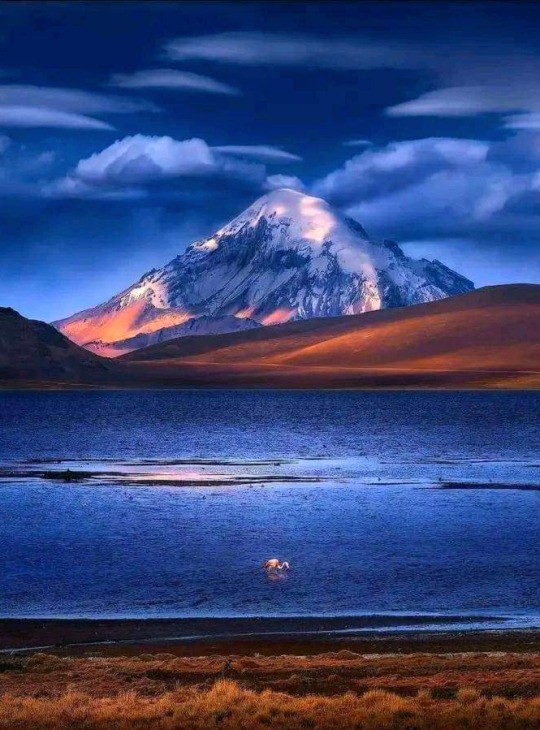
Landscape of Chile
66 notes
·
View notes
Text
Kitchen Music by Lesley Harrison
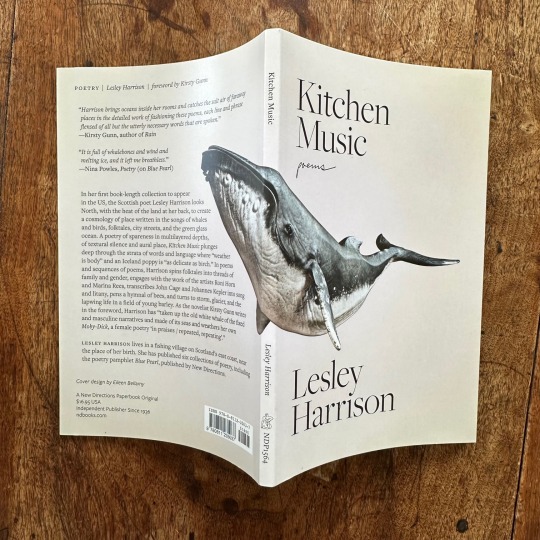
Kitchen Music
New York, 2017
collage = REALITY —Joseph Cornell
i. the morning after with its "back to life" feeling. manhattan breakfast:
a restaurant of silver grey driftwood — a feeling of water.
ii. outside the coffee shop a young bird alighted — treethrushsong
iii. a gulf of rain, and the city sinks an inch.
at Penn Station, the lush tyres of yellow taxis — umbrellas of Cherbourg in the subway crush.
iv.
chance encounters: old back yards, reflections of the sun through curtains
from the sidewalk, gleaming the city market, "Hey Jude" among
bees and melons a steel bridge, the Hudson blank between the walls.
a corner bar. a girl in a window.
v. Thursday at the arboretum: cool green the café kitchen window open
and sounds tunnel in — song sparrows, butterflies that churr
vi. downtown evening: the sky towers of Manhattan dark green against a stark aqua sky
then home, the sea a new north blue.
the chill early March breezes a wild piano music. nostalgia wiped clear
vii.
this morning among the tidewrack: azimuth, whale bone
shoes and twine, a tedium of cartons, floats varia, etcetera.
a day owl, almost blue.
viii.
couch dream evening entre chien et loup, a high angelic sunset
"the earth with yellow pears and wild with roses"
ix. ephemera: what minute (infinitesimal) living can be
***
Iceland Poppy
Victoria Street, Kirkwall
it is snowing.
in the silence of this bright space
a tight bud creaking
prehistoric as delicate as birch
dark white, rooting.
***
Hailuoto
The island of Hailuoto first appeared in the waters of Gulf of Bothnia in the first or second century AD. It continues to rise, and is now connected to the landmass of Sweden at low tide.
•
not light not dark:
a blank north ocean too far for birds
•
a catch on the horizon
•
chilled enlightenment —
of crushed grey green, the sudden extrusion of a crest
a humboldt current drawing up the cold
the sea uneasy, querulous and dense the sea's slow upwelling
the sky an open eye
•
daylight, unworded: like a film left to run on endless loop
the old sea bed brought up into the air exhumed, exposed
the wind unrhymed, rough at the edges
the wind — a song no music.
•
grass grows: a faint effort, almost hum
as bays become lakes lakes become swamps swamps become meadows
blank brackish sponge fastened to each other, uterine and beading
eelpout, lugworm fungal and beetle black true wretches of the sea
•
at Marjaniemi
the pilot station black against the sky, its wooden ribs still sprung.
long strings are installed, tuned to its resonant frequencies.
all day, the building sings to itself in tectonic calm — A# and G — a faint, tinny gamelan
octaves blooming over hours or deforming as light or wind declines,
like that part of the inner ear whose thin hairs can detect a note, even at great distance
•
between the houses, there is always wind
as if the ground, in its blind lurch upward has trapped part of the air above the sea
so that you round a corner into a local squall, still playing out still gasping
like an old sea mammal, trapped on a sandbar in cold daylight outweighed by its bones
now dull eyed and puckering
now slumped in sorrow
•
the white wind turbine, its helicopter shuddering as if the news from somewhere else had suddenly arrived without the pictures and this was the sound today
of a flood in a suburb an unseasonal avalanche a forgotten war in a small, hot country a market a mosque, gouged out all limbs and bloody bandages
•
fog makes isolated gestures like a hand without a body
•
landmarks are passed. keeping near offshore and losing
•
out of the visible ahead, a radio mast
•
fog, suspended.
an empty hallway a tremor in a glass of water
•
landstat. a light clicks on and kills the roar of light across the subpolar sky.
we have run aground at the outskirts. the rain from Oulu falls.
•
almost homelike: an island sunk in darkness in cobbled dry new forests
and the end of the street is the limit of the world where the ocean retreats and retreats
•
flute in a tall tree, rehearsing
quotations misplaced, part rhymes
reiterated, lost in a world of lost
***
Hymnal
Apis mellifera mellifera
[Spring] thin undermusic: aeolian, arousing or whispery, thriving
now gossiping, their crowdy knees and elbows, all riddles and epiphanies
now off gallivanting from their next-door front doors, unlooping, climbing strings
humming their hums as they fly to the sun and back
[egg] brief iota —
a pip of wet white something moistened to the wall
now bend now ripe now swelling
now raised like an eyebrow
[queen] fine faced and sleek our cleopatra, high in her eyrie
a whore in a nunnery, paddling her bulk among oozy mattresses
and wide saffron tapestries stitched with faint gold leaf
[workers] and the godmothers:
woody carmelites, performing their work-love in dark loft dormitories
mumming and murmuring, nursing their godlings
with old lullabies of operas and suicides and practical acts of love
[inspection] look down! at this hoi polloi, on velvet gorse carpets
performing and performing their stories now zither, dispersing into corners
puzzling to disquiet like an orchestra gone to pieces, sending out doodlebugs
now riding out like valkyries harrassing, hurling lightnings piercing the smoke screen
like bees at bannockburn clouding for battle, skirling their anthem —
[June] rain, rain.
idling, we soloists crooning our croons in the half dusk, dreaming
a whitish plant of brownish blossom
while shuddery pearls of water fall
[pollen] what alchemists! what jealous privateers, what lapidary hoarders:
jewel pins of tessellated amber, copper, coral red tamped down, breaded to a pulp
packed like chandeliers and stacked to the rafters
and old gold, slightly tarnished forged into wee thrupenny bits
[starvation] like a nuclear winter:
a whole army, still assembled in ranks stone dead in their bunker
gasless, grey as cement.
a private hara kiri, a death pact.
[supersedure] old troglodyte: old bauchle, old hebe alone in her parlour,
singing to herself this high summer evening, bald as a husk and
twitching her curtains, her kettle gone cold her children off to Canada
Hansel and Gretel in Photos
In the beginning, or almost, for in the forest everything had always already begun . . . -Claudio Magris, Microcosms
a young wood a curving flock of rooks a low orange sun
[1] it is as if we had all been astonished. standing against a wall of trees the sun remakes us as statues
light-struck, all surfaces and shadows. this is what we remember to remember and no one is growing any older
everyone alone in the daylight as all photographs are real and all stories are true.
but who is that, behind slipping back into the forest, and who is holding the camera?
[2] now we are in the other room; the two of them are talking in a corner faces averted, deep in shade.
the light from the window cloaks them, wool lined, elderly and private their white hair gleaming
their backs rigid and bossed, curved like wooden shields worn smooth, facing outward.
[3] this photograph was shot from below. she poses, towering like a goddess. the sky is bare, almost absent. her blouse is emitting its own light. a tree holds the clouds quite still. his eyes are turned to the ground. they stand by each other on the path so close, they make each other tremble.
[4] and now, here we are in the forest high on a branch, looking down like owls, folded and watchful;
and oak, and pollard, and rowan and green elm, and damp, and woodworm and two people almost in the frame
on another older, unmarked trail that only they can follow.
where does the forest begin? its entrances are invisible, its paths both real and imagined
its deep breaths neither heat nor melancholy; just the feeling that this is.
[5] our bedroom is curtained and airy. our bedroom is empty, like a room with pictures of woods and meadows. the pictures reach deep into the wall.
the floor is turfed and familiar. light comes and goes outside the window. birds fly through the timbered walls but we are not there to see it.
[6] I am a sweet, fat baby laced and ribboned like an idol, placed in her lap.
her hands curl like tree roots. she gazes, entranced at the eighty years between us.
climbing trees, gaining distance. the world, with its weight of nothing leans and levels, leans and levels.
[7] the village has vanished. the air is pink and colder. rooks clatter in the branches.
there is a sense of something new amiss, something whispery and nestish.
[8] her house is sinking into the ground: her sideboard is up to its knees in china, and shortbread, and sweeties. her old clock shows the time in years.
she waits on the sofa for us coming, turning live coals in the grate telling and retelling the future. her eyes are blank as pebbles.
[9] and now, here I am in my garden gathering silences in jars my house is as empty as water my door is open to the air
and everything is perfect, undefined and everything is yellow in the sun and suddenly I'm older than they are and now it is time to go home.
[10] evening arrives in minutes: the trees are hissing and sighing leaves blowing through the rooms
the walls now soft and undecided and ants tunnel under the paper the pattern blurring and blinking
the text creeping into the picture where everything is both false and true.
[11] tonight all the houses are sleeping the chimneys long towards the sky our car is parked at the pavement my hands are like moths on her face
she hides me up inside her hair she is as comfortable as sleep the street lamps humming in the dark the forest is jagged and empty.
[12] how in the end they simply went home, returning at evening
walking backwards through coarse grasses and monstrous stumps of wood
gathering small discarded moons which glowed, then winked and died in their pockets.
fires burn the tops of trees orange, orange, dull brown
the trees full-length against the sky at sunset, as seen from below.
this is a picture of itself. there are no shadows.
0 notes